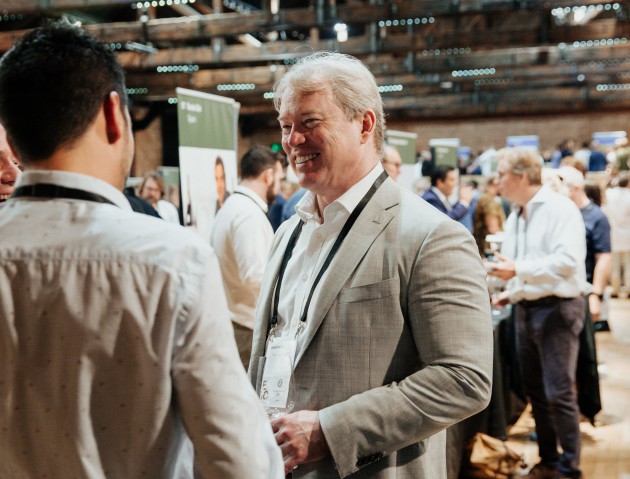
Looking Back, Forging Ahead Q&A: Troy Christensen, Enotria
Midway through 2023, Harpers is taking stock of yet another turbulent year for the drinks trade, with plenty of highs and lows, so far. We continue our series with Troy Christensen, CEO, Enotria, to find out how the year has gone so far and what the remainder may bring.
How has business been for you in the first half of 2023 and how do things compare to where you were last year?
Despite the inflation and economic headwinds, hospitality has been surprisingly resilient with spending up year on year. There has certainly been a mix shift with events, experiential and destination restaurants remaining strong, but weakness in casual dining.
With this in mind, needing to adapt to an unpredictable market has been a key focus for us for the first six months of this year. I am proud of how the team has risen to the challenge, working together in partnership with our customers to share knowledge and provide solutions. We are also very grateful for the support we’ve had from our producers, many of whom we’ve shared a relationship with for decades.
In February, we held our largest and most successful annual portfolio tasting to date, with 157 producers from around the globe and 1,300 people joining us at The Brewery, Moorgate. It really felt like we were back with a bang, with this tasting being the first at which we were able to welcome so many of our suppliers and customers back after the enforced period of hibernation during the pandemic.
How has the cost-of-living crisis played out across the year and what – if anything – have you been able to do to mitigate that?
Despite elevating costs in areas such as glass bottles, freight expenses have reduced and strong vintages in Europe and New Zealand have had a positive effect on sales overall. We are seeing consumers willing to pay for good quality, choosing this over quantity, which is also helping to mitigate rising costs. Going forward, outlets should work to be competitive in the right areas to reflect this trend.
What are you most proud of achieving this year? Have you managed to achieve any specific goals?
Given the market challenges that we saw during the Christmas strikes at the end of last year and the effects this has had going into 2023 on the trade, we have made a significant, strategic decision to move away from providing a composite solution, redirecting Enotria & Coe back to its roots as a premium wine specialist, with a much more bespoke selection of spirits.
I am most proud of how open and responsive the team has been at pivoting the business to reach this goal, benefitting from the trend of quality over quantity. The expertise we now have across the company, including fine wines, spirits, finance and logistics makes me feel excited about our future.
And what is the biggest cause for concern?
The economy is feeling pressure from sticky inflation and increasing interest rates. Yet the UK government has decided to pass substantial duty increases, which just puts more pressure on the economy and again negatively impacts hospitality. Consumers will moderate and prioritise their spending, which will force outlets to compete by providing a great experience.
What are the biggest drinking trends at the moment, and how do you expect that to change going into the autumn?
There is an increased focus on products taking sustainability seriously, particularly alternative packaging, such as a reduction in the use of capsules on bottles. As Burgundy and Champagne prices increase, together with ongoing supply issues, people are looking for credible alternatives, especially crémant, English sparkling and Cava within the sparkling category.
Low & no as an overall category continues to explode across the board. However, the non-spirit category continues to struggle with how it’s communicated and perceived by the consumer. That being said, it is widely accepted that products that are not trying to simulate a spirit are often of a much higher quality than those that do.
Fresher, lighter wines continue to be popular and we expect this to persist in the second half of the year, given the upcoming duty revisions. In general, the grapes are harvested earlier, resulting in lower alcohol and therefore lower duty. It is also worth noting that in moments of crisis, we generally see people revert to safe bets, such as well-known categories and brands, so we expect this to be a key focus heading into the autumn.
Is Covid now a distant dream, or are you still seeing lingering effects?
Covid is thankfully a distant nightmare, but has created changes in consumer behaviour, felt in both hospitality and retail. Working from home has shifted consumption patterns in city centres. There has also been an increase in low & no, due to a focus on health. Hospitality hotspots are doing well, but other venues are struggling with lack of volume and patchy traffic.
Any predictions for the second half of the year?
I fear the duty increase will put additional pressure on a strained consumer and volumes will suffer. This pressure will reduce ecommerce sales after a Covid resurgence. Although drinkers are consuming less wine, we do expect premium wines to continue to grow in share, reflected in consumers’ retail purchases, as well as what they choose to drink in restaurants. Overall spend in the restaurants sector is expected to reduce, with consumers going out less, but focusing on experiential and destination restaurants when they do. Alternative packaging will get a boost, not just from the sustainable-conscious consumer, but also increased glass costs.
Quick-fire questions…
Old World or New?
After working for wineries in California and Australia, I am permanently drinking big, bold, New World wines.
Cocktail or slow sippin’ spirit?
A nice whiskey neat (yes, the type spelt with an “e”).
Vermentino or Vermouth?
Vermentino.
Low or no?
No.
Three-star or bistro?
Bistro.
Desert island tipple?
Eagle Rare 17-year-old.




